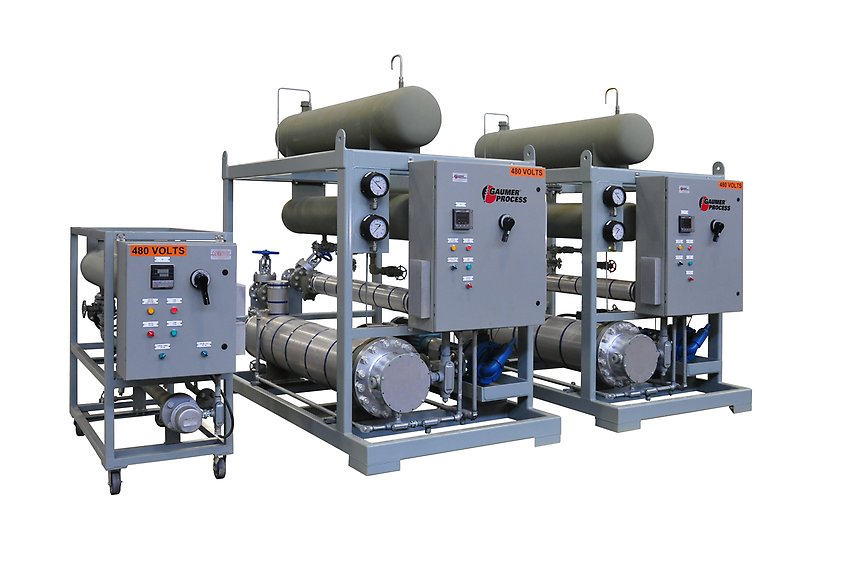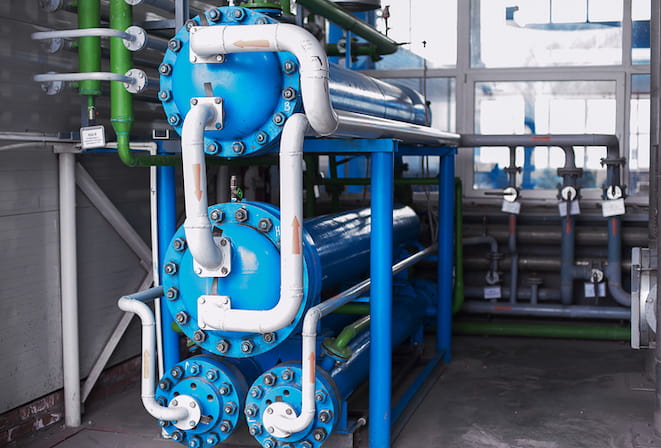Are DVS Heat Transfer Systems Designed for High-Performance Electronics Cooling?
Wiki Article
A Comprehensive Guide to Picking the Right Heat Transfer Systems for Your Needs
Picking the ideal Heat transfer system is essential for functional performance. Different systems accommodate various needs, influenced by factors such as temperature variety and fluid type. Comprehending the concepts behind Heat transfer, such as radiation, conduction, and convection, is important. Furthermore, examining energy resources and upkeep practices can impact lasting efficiency. A closer evaluation of these considerations exposes just how to customize a system to certain demands. What should one prioritize in this facility decision-making process?Comprehending Heat Transfer: Trick Concepts and Principles
Heat transfer may appear like a straightforward principle, it includes a range of principles that are fundamental for efficient system style - DVS Heat Transfer Systems. Comprehending these principles is essential for designers and designers that aim to optimize thermal efficiency in numerous applications. Transmission, for example, involves the transfer of Heat with strong materials, while convection describes the movement of Heat within liquids. Radiation, an additional vital concept, describes just how Heat can be transferred with electromagnetic waves. Each of these systems plays a crucial duty in figuring out how energy moves within a system. By extensively grasping these concepts, specialists can make informed choices, making sure that Heat transfer systems run successfully and satisfy the specific needs of their applications
Sorts Of Heat Transfer Systems: An Overview
Recognizing the concepts of Heat transfer prepares for exploring the numerous kinds of Heat transfer systems available. Heat transfer systems can be categorized largely right into three types: convection, radiation, and transmission. Transmission includes Heat transfer through strong products, counting on direct call in between bits. Convection, on the various other hand, occurs in fluids (gases and liquids) where the motion of the fluid itself promotes Heat transfer. Radiation includes the transfer of Heat via electromagnetic waves and does not call for a medium, permitting it to occur in a vacuum cleaner. Each kind of system has distinctive characteristics and applications, making it crucial for people and companies to thoroughly examine their particular demands when picking one of the most ideal Heat transfer solution.Applications of Heat Transfer Systems in Numerous Industries
Heat transfer systems play a crucial duty across different markets, impacting effectiveness and product high quality. In industrial production processes, they help with precise temperature control, while in food and drink processing, they assure safety and security and preservation. Furthermore, a/c and environment control systems count greatly on reliable Heat transfer to keep comfortable atmospheres.Industrial Manufacturing Processes

Numerous commercial manufacturing processes count heavily on effective Heat transfer systems to take full advantage of performance and improve item quality. In industries such as metalworking, Heat exchangers play a vital role in keeping perfect temperature levels throughout welding, spreading, and creating. These systems assure consistent Heat distribution, which is crucial for achieving desired product properties. Similarly, in the chemical manufacturing sector, Heat transfer systems assist in accurate temperature level control throughout responses, influencing return and safety and security. In textile production, efficient Heat monitoring is vital for dyeing and ending up procedures, affecting color consistency and material top quality. By selecting proper Heat transfer modern technologies, makers can boost energy performance and reduce operational prices, inevitably bring about a more affordable and sustainable manufacturing setting.
Food and Drink Handling
Effective Heat transfer systems are similarly important in the food and drink handling sector, where maintaining optimal temperature levels is crucial for food safety and quality. These systems play an essential function in processes such as cooking, pasteurization, and sanitation, guaranteeing that items are risk-free for consumption and preserve their dietary value. Heat exchangers, for circumstances, efficiently move Heat in between liquids, enhancing energy use while lessening temperature level fluctuations. Furthermore, refrigeration systems are basic for preserving perishable things and prolonging life span. The selection of Heat transfer modern technology directly impacts operational efficiency and item integrity, making it necessary for food and drink suppliers to select the appropriate systems tailored to their specific processing demands. This cautious option ultimately adds to customer satisfaction and food safety.
HVAC and Environment Control
While many sectors rely on Heat transfer systems for performance, A/C (Heating, Ventilation, and Air Conditioning) plays an important role in maintaining interior environment control across different setups. These systems make use of Heat transfer concepts to regulate air, temperature, and moisture top quality, guaranteeing convenience and security in domestic, industrial, and commercial environments. Effectively made a/c systems enhance power effectiveness, minimize functional expenses, and decrease ecological impact. In industrial structures, for circumstances, effective environment control contributes to staff member productivity click here for more info and consumer fulfillment. In commercial applications, HVAC systems assist maintain optimal problems for devices procedure and item conservation. Choosing the appropriate Heat transfer system is vital for conference details climate control demands and accomplishing general system efficiency.Examining Energy Sources for Heat Transfer Solutions
In reviewing energy sources for Heat transfer systems, a comparison of eco-friendly power alternatives and fossil gas factors to consider is essential. Renewable resources, such as solar and wind, offer sustainable alternatives that can reduce ecological influence. Conversely, nonrenewable fuel sources remain widespread as a result of their well-known infrastructure and power density, prompting a mindful evaluation of both choices.Renewable Resource Options

Fossil Gas Considerations
Examining nonrenewable fuel source considerations is important for the effectiveness and sustainability of Heat transfer systems. Nonrenewable fuel sources, such as gas, oil, and coal, are traditional power sources that supply substantial Heat outcome, making them prominent selections for industrial and household applications. Their environmental influence, consisting of greenhouse gas emissions and source depletion, increases concerns. When choosing a heat transfer system, it is essential to examine the schedule, expense, and governing elements connected with these gas. Additionally, the effectiveness of fossil gas systems must be thought about, as higher effectiveness can minimize some environmental disadvantages. Ultimately, a balanced technique considering performance and sustainability can direct decision-makers towards one of the most suitable Heat transfer option for their details needs.Variables to Take Into Consideration When Choosing a Warm Transfer System
Selecting a suitable Heat transfer system requires cautious factor to consider of numerous variables that can considerably affect effectiveness and performance. One important aspect is the operating temperature range, which dictates the products and design suitable for the application. Additionally, the sort of fluid used in the system-- whether gas or fluid-- affects Heat transfer performance and compatibility. The system's size and capacity need to align with the specific needs of the operation to prevent inadequacies. Power resource availability is also necessary, affecting operating expense and sustainability. Furthermore, the setup environment, consisting of room restraints and accessibility for maintenance, plays a significant duty in system option. Governing conformity and safety standards have to be thought about to guarantee the system fulfills all lawful requirements.Maintenance and Effectiveness Optimization for Heat Transfer Equipments
Maintaining Heat transfer systems is crucial for making certain maximum efficiency and long life. Regular upkeep tasks, such as cleaning Heat exchangers and evaluating insulation, assistance prevent performance losses due to fouling and thermal linking. Furthermore, monitoring system specifications, including stress and temperature level, permits very early discovery of anomalies, decreasing downtime and expensive fixings. Carrying out a preventative maintenance timetable can maximize performance and prolong the life-span of components. Additionally, upgrading to innovative control systems can enhance operational effectiveness by adapting to varying problems and lots. By focusing on maintenance and performance optimization, operators can accomplish minimized power intake, reduced functional prices, and boosted overall system reliability, ultimately leading to much better source application and an extra sustainable operation.Future Fads in Heat Transfer Technologies
As sectors significantly prioritize sustainability and energy efficiency, future fads in Heat transfer innovations are established to undertake considerable makeovers. Innovations such as advanced materials, consisting of carbon nanotubes and nanofluids, guarantee boosted thermal conductivity and efficiency. Furthermore, the combination of renewable energy resources right into Heat transfer systems is getting momentum, advertising environment-friendly options. Smart modern technologies, consisting of IoT sensing units, are anticipated to transform monitoring and image source control, enabling real-time information analysis for optimized efficiency. The growth of small and modular systems will help with simpler setup and upkeep, providing to diverse applications. These developments show a shift in the direction of more lasting, effective, and adaptable Heat transfer services, straightening with global power objectives and environmental requirements.
Regularly Asked Inquiries
What Are the Environmental Influences of Heat Transfer Equipments?
The environmental influences of Heat transfer systems can consist of greenhouse gas emissions, energy consumption, and potential thermal air pollution. Furthermore, incorrect disposal of inefficiencies and materials can add to resource exhaustion and community interruption.Just how Do I Calculate the Cost-Effectiveness of a Heat Transfer System?
To calculate the cost-effectiveness of a warmth transfer system, one should assess initial costs, functional expenditures, upkeep requirements, and energy effectiveness, contrasting these factors against the anticipated life-span and performance of the system.Can Heat Transfer Systems Be Used in Residential Setups?
Heat transfer systems can undoubtedly be made use of in residential settings. They offer reliable home heating and cooling down solutions, making homes much more comfortable while potentially decreasing power prices. Their flexibility enables various applications in domestic atmospheres.What Safety Laws Put On Heat Transfer Systems?
Safety policies for Heat transfer systems normally consist of standards on setup, maintenance, and procedure. Conformity with neighborhood building ordinance, supplier specifications, and market criteria is vital to assure risk-free and effective system performance in various applications.Just How Do Various Materials Affect Heat Transfer Efficiency?

Transmission, for circumstances, involves the transfer of Heat with solid materials, while convection refers to the activity of Heat within liquids. Comprehending the concepts of Heat transfer lays the groundwork for exploring the different types of Heat transfer systems available. Heat exchangers, for instance, efficiently transfer Heat in between liquids, optimizing energy use while decreasing temperature variations. In examining energy sources for Heat transfer systems, a comparison of eco-friendly power options and fossil fuel considerations is vital. Metals, such as copper and aluminum, conduct Heat properly, whereas go to my blog insulators like rubber and glass slow down Heat flow.
Report this wiki page